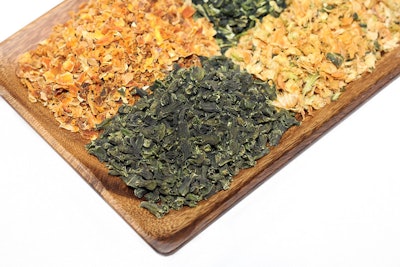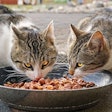
The steady advancement of pet industry dollar sales remains largely a function of converting pet owners to higher priced products and services — or “premiumization.” But this long-relied-on strategy rests heavily on the willingness of affluent pet parents to do most of the dollar spending, and during the pandemic and in the current macroeconomic climate, even upper-income households have shown signs of cutting back.
Fresh pet food looking to break through
Looking ahead, the cases for premiumization will need to be ever stronger, with several market areas ripe for development. As reported in Packaged Facts’ “US Pet Market Outlook, 2025–2026,” the diva for pet product premiumization remains higher-end pet food, which posted double-digit unit growth in 2024. At the head of the class, there is fresh pet food (refrigerated or frozen) — with fresh arguably the paramount positioning for superpremium — which is growing several times faster than pet food overall. Retailers, and especially pet specialty retailers, should have in place and keep in the pipeline robust fresh pet food programs encompassing both in-store purchasing and home delivery options.
Consistent with the appeal of human-grade pet foods is that many pet owners are already feeding their pets human foods, and this practice is more pronounced among younger pet owners. Packaged Facts survey results from January 2025 show that 31% of pet owners regularly include human foods in their pets’ diets, a rate consistent across generational cohorts. Additionally, 27% of pet owners regularly give their pets fresh, natural foods other than packaged/processed foods, and 21% regularly prepare human-ingredient foods for their pets — rising to 32% of Gen Zers and 24% of Millennials, vs. 17% of Gen Xers or Boomers.
Kibble dominance vs. consumer perception
These data point to a disconnect between the nearly universal popularity of kibble as commercial dog and cat foods, and consumer skepticism about processed foods in general, extending to processed pet foods. At least in terms of nutritional attitudes, as opposed to product purchasing behaviors, marketers such as Freshpet and The Farmer’s Dog are preaching to a consumer choir when making their case against kibble.
Packaged Facts survey data show that between two-thirds and three-fourths of pet food category shoppers agree (strongly or somewhat) that “pet foods free of artificial ingredients are healthier for my pets,” and that “pet foods made from whole foods are healthier for my pets.” Conversely, only about half agree (strongly or somewhat) that “ordinary pet food provides all the nutrition that pets need.” That is, the same disconnect between consumer behaviors and attitudes around processed foods that holds for packaged foods generally carries over to the pet food category.
The success of fresh pet food, where consumer attitudes become more aligned with purchasing behaviors, has created the necessity/invention opportunity for kibble to up its game, whether in the form of next-generation science-based and/or functional diets, pet foods featuring alternative proteins, and “kibble plus” options incorporating freeze-dried and other premium components. Along these lines, Primal Pet Foods introduced Kibble in the Raw, which “fuses the ease of kibble with the nutritional benefits of raw.” Kibble and wet foods making “gently cooked” claims (implying more retention of fresh, natural food nutrition) are also on the rise.
Personalization’s place in the market battle
As in the human consumer products market, moreover, customization (aka personalization) is a key strategy for differentiation and locking-down customer loyalty, the latter in part by helping to make pet parenting expenses more targeted and therefore more justifiable. Per Packaged Facts’ January 2025 Survey of Pet Owners, customized pet food formulations attract approximately one in 10 dog and cat owners, and as with fresh pet food those numbers are likely to swing upward in the years ahead.
A sign of the times, Ollie plans to use the AI technology acquired with DIG to create personalized diets. Rewards and subscription programs, benefiting customers and marketers alike, also provide grist for the mill for ongoing personalization per the pet food shopper’s individual and morphing needs and expectations.
~~~~~~~~~~~~~~~~~~
Top 3 trends in 2025: Customization, functionality, premiumization

















